Freddie Mac 2010 Annual Report Download - page 6
Download and view the complete annual report
Please find page 6 of the 2010 Freddie Mac annual report below. You can navigate through the pages in the report by either clicking on the pages listed below, or by using the keyword search tool below to find specific information within the annual report.-
 1
1 -
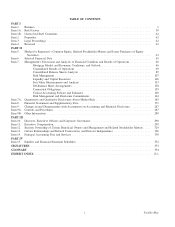 2
2 -
 3
3 -
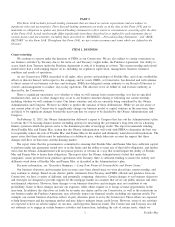 4
4 -
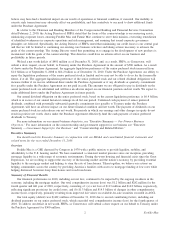 5
5 -
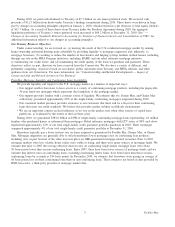 6
6 -
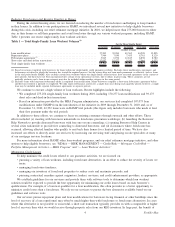 7
7 -
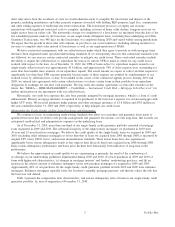 8
8 -
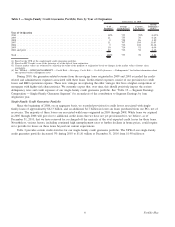 9
9 -
 10
10 -
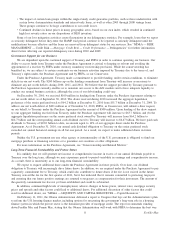 11
11 -
 12
12 -
 13
13 -
 14
14 -
 15
15 -
 16
16 -
 17
17 -
 18
18 -
 19
19 -
 20
20 -
 21
21 -
 22
22 -
 23
23 -
 24
24 -
 25
25 -
 26
26 -
 27
27 -
 28
28 -
 29
29 -
 30
30 -
 31
31 -
 32
32 -
 33
33 -
 34
34 -
 35
35 -
 36
36 -
 37
37 -
 38
38 -
 39
39 -
 40
40 -
 41
41 -
 42
42 -
 43
43 -
 44
44 -
 45
45 -
 46
46 -
 47
47 -
 48
48 -
 49
49 -
 50
50 -
 51
51 -
 52
52 -
 53
53 -
 54
54 -
 55
55 -
 56
56 -
 57
57 -
 58
58 -
 59
59 -
 60
60 -
 61
61 -
 62
62 -
 63
63 -
 64
64 -
 65
65 -
 66
66 -
 67
67 -
 68
68 -
 69
69 -
 70
70 -
 71
71 -
 72
72 -
 73
73 -
 74
74 -
 75
75 -
 76
76 -
 77
77 -
 78
78 -
 79
79 -
 80
80 -
 81
81 -
 82
82 -
 83
83 -
 84
84 -
 85
85 -
 86
86 -
 87
87 -
 88
88 -
 89
89 -
 90
90 -
 91
91 -
 92
92 -
 93
93 -
 94
94 -
 95
95 -
 96
96 -
 97
97 -
 98
98 -
 99
99 -
 100
100 -
 101
101 -
 102
102 -
 103
103 -
 104
104 -
 105
105 -
 106
106 -
 107
107 -
 108
108 -
 109
109 -
 110
110 -
 111
111 -
 112
112 -
 113
113 -
 114
114 -
 115
115 -
 116
116 -
 117
117 -
 118
118 -
 119
119 -
 120
120 -
 121
121 -
 122
122 -
 123
123 -
 124
124 -
 125
125 -
 126
126 -
 127
127 -
 128
128 -
 129
129 -
 130
130 -
 131
131 -
 132
132 -
 133
133 -
 134
134 -
 135
135 -
 136
136 -
 137
137 -
 138
138 -
 139
139 -
 140
140 -
 141
141 -
 142
142 -
 143
143 -
 144
144 -
 145
145 -
 146
146 -
 147
147 -
 148
148 -
 149
149 -
 150
150 -
 151
151 -
 152
152 -
 153
153 -
 154
154 -
 155
155 -
 156
156 -
 157
157 -
 158
158 -
 159
159 -
 160
160 -
 161
161 -
 162
162 -
 163
163 -
 164
164 -
 165
165 -
 166
166 -
 167
167 -
 168
168 -
 169
169 -
 170
170 -
 171
171 -
 172
172 -
 173
173 -
 174
174 -
 175
175 -
 176
176 -
 177
177 -
 178
178 -
 179
179 -
 180
180 -
 181
181 -
 182
182 -
 183
183 -
 184
184 -
 185
185 -
 186
186 -
 187
187 -
 188
188 -
 189
189 -
 190
190 -
 191
191 -
 192
192 -
 193
193 -
 194
194 -
 195
195 -
 196
196 -
 197
197 -
 198
198 -
 199
199 -
 200
200 -
 201
201 -
 202
202 -
 203
203 -
 204
204 -
 205
205 -
 206
206 -
 207
207 -
 208
208 -
 209
209 -
 210
210 -
 211
211 -
 212
212 -
 213
213 -
 214
214 -
 215
215 -
 216
216 -
 217
217 -
 218
218 -
 219
219 -
 220
220 -
 221
221 -
 222
222 -
 223
223 -
 224
224 -
 225
225 -
 226
226 -
 227
227 -
 228
228 -
 229
229 -
 230
230 -
 231
231 -
 232
232 -
 233
233 -
 234
234 -
 235
235 -
 236
236 -
 237
237 -
 238
238 -
 239
239 -
 240
240 -
 241
241 -
 242
242 -
 243
243 -
 244
244 -
 245
245 -
 246
246 -
 247
247 -
 248
248 -
 249
249 -
 250
250 -
 251
251 -
 252
252 -
 253
253 -
 254
254 -
 255
255 -
 256
256 -
 257
257 -
 258
258 -
 259
259 -
 260
260 -
 261
261 -
 262
262 -
 263
263 -
 264
264 -
 265
265 -
 266
266 -
 267
267 -
 268
268 -
 269
269 -
 270
270 -
 271
271 -
 272
272 -
 273
273 -
 274
274 -
 275
275 -
 276
276 -
 277
277 -
 278
278 -
 279
279 -
 280
280 -
 281
281 -
 282
282 -
 283
283 -
 284
284 -
 285
285 -
 286
286 -
 287
287 -
 288
288 -
 289
289 -
 290
290 -
 291
291 -
 292
292 -
 293
293 -
 294
294 -
 295
295 -
 296
296 -
 297
297 -
 298
298 -
 299
299 -
 300
300 -
 301
301 -
 302
302 -
 303
303 -
 304
304 -
 305
305 -
 306
306 -
 307
307 -
 308
308 -
 309
309 -
 310
310 -
 311
311 -
 312
312 -
 313
313 -
 314
314 -
 315
315 -
 316
316 -
 317
317 -
 318
318 -
 319
319 -
 320
320 -
 321
321 -
 322
322 -
 323
323 -
 324
324 -
 325
325 -
 326
326 -
 327
327 -
 328
328 -
 329
329 -
 330
330 -
 331
331 -
 332
332 -
 333
333 -
 334
334 -
 335
335 -
 336
336 -
 337
337 -
 338
338 -
 339
339 -
 340
340 -
 341
341 -
 342
342 -
 343
343 -
 344
344 -
 345
345 -
 346
346 -
 347
347 -
 348
348 -
 349
349 -
 350
350 -
 351
351 -
 352
352 -
 353
353 -
 354
354 -
 355
355 -
 356
356
 |
 |

During 2010, we paid cash dividends to Treasury of $5.7 billion on our senior preferred stock. We received cash
proceeds of $12.5 billion from draws under Treasury’s funding commitment during 2010. These draws were driven in large
part by changes in accounting principles adopted on January 1, 2010, which resulted in a net decrease to total equity (deficit)
of $11.7 billion. As a result of these draws from Treasury under the Purchase Agreement during 2010, the aggregate
liquidation preference of Treasury’s senior preferred stock increased to $64.2 billion at December 31, 2010. See “ —
Changes in Accounting Standards Related to Accounting for Transfers of Financial Assets and Consolidation of VIEs” for
additional information related to our changes in accounting principles.
Our Primary Business Objectives
Under conservatorship, we are focused on: (a) meeting the needs of the U.S. residential mortgage market by making
home ownership and rental housing more affordable by providing liquidity to mortgage originators and, indirectly, to
mortgage borrowers; (b) working to reduce the number of foreclosures and helping to keep families in their homes, including
through our role in the MHA Program initiatives, including HAMP, and our relief refinance mortgage initiative;
(c) minimizing our credit losses; and (d) maintaining the credit quality of the loans we purchase and guarantee. These
objectives reflect, in part, direction we have received from the Conservator. We also have a variety of different, and
potentially competing, objectives based on our charter, public statements from Treasury and FHFA officials, and other
guidance from our Conservator. For more information, see “Conservatorship and Related Developments — Impact of
Conservatorship and Related Actions on Our Business.”
Providing Mortgage Liquidity and Conforming Loan Availability
We provide liquidity and support to the U.S. mortgage market in a number of important ways:
• Our support enables borrowers to have access to a variety of conforming mortgage products, including the prepayable
30-year fixed-rate mortgage which represents the foundation of the mortgage market.
• Our support provides lenders with a constant source of liquidity. We estimate that we, Fannie Mae, and Ginnie Mae
collectively guaranteed approximately 89% of the single-family conforming mortgages originated during 2010.
• Our consistent market presence provides assurance to our customers that there will be a buyer for their conforming
loans that meet our credit standards. We believe this provides market stability in difficult environments.
• We are an important counter-cyclical influence as we stay in the market even when other sources of capital have
pulled out, as evidenced by the events of the last three years.
During 2010, we guaranteed $384.6 billion in UPB of single-family conforming mortgage loans representing 1.8 million
families who purchased homes or refinanced their mortgages. Relief refinance mortgages with LTV ratios of 80% and above
represented approximately 12% of our total single-family credit guarantee portfolio purchases in 2010. These mortgages
comprised approximately 4% of our total single-family credit guarantee portfolio at December 31, 2010.
Borrowers typically pay a lower interest rate on loans acquired or guaranteed by Freddie Mac, Fannie Mae, or Ginnie
Mae. Mortgage originators are generally able to offer homebuyers lower mortgage rates on conforming loan products,
including ours, in part because of the value investors place on GSE-guaranteed mortgage-related securities. Prior to 2007,
mortgage markets were less volatile, home values were stable or rising, and there were many sources of mortgage funds. We
estimate that prior to 2007 the average effective interest rates on conforming single-family mortgage loans were about
30 basis points lower than on non-conforming loans. Since 2007, there have been fewer sources of mortgage funds, and we
estimate that interest rates on conforming loans, excluding conforming jumbo loans, have been lower than those on non-
conforming loans by as much as 184 basis points. In December 2010, we estimate that borrowers were paying an average of
68 basis points less on these conforming loans than on non-conforming loans. These estimates are based on data provided by
HSH Associates, a third-party provider of mortgage market data.
3Freddie Mac
